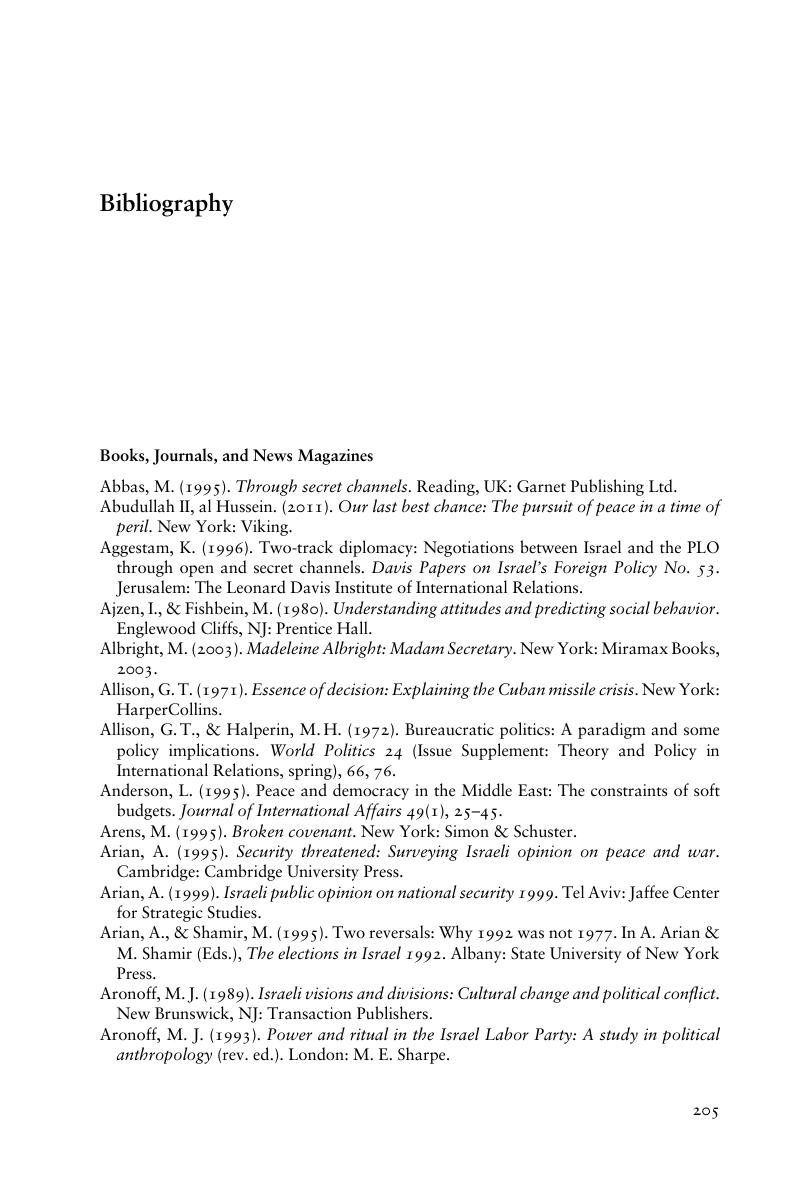Book contents
- Frontmatter
- Dedication
- Contents
- Preface
- Acknowledgments
- 1 Introducing the Conceptual Framework
- 2 Yitzhak Shamir: Once a Hawk, Always a Hawk
- 3 Benjamin Netanyahu: Battling the World
- 4 Ariel Sharon: From Warfare to Withdrawal
- 5 Yitzhak Rabin: From Hawk to Nobel Prize Peacemaker
- 6 Ehud Barak: All or Nothing
- 7 Shimon Peres: From Dimona to Oslo
- 8 The Psychology of Political Conversion
- Appendix A Summary of Key Factors and Findings
- Appendix B Interviews Conducted by the Author
- Bibliography
- Index
- References
Bibliography
Published online by Cambridge University Press: 05 June 2014
- Frontmatter
- Dedication
- Contents
- Preface
- Acknowledgments
- 1 Introducing the Conceptual Framework
- 2 Yitzhak Shamir: Once a Hawk, Always a Hawk
- 3 Benjamin Netanyahu: Battling the World
- 4 Ariel Sharon: From Warfare to Withdrawal
- 5 Yitzhak Rabin: From Hawk to Nobel Prize Peacemaker
- 6 Ehud Barak: All or Nothing
- 7 Shimon Peres: From Dimona to Oslo
- 8 The Psychology of Political Conversion
- Appendix A Summary of Key Factors and Findings
- Appendix B Interviews Conducted by the Author
- Bibliography
- Index
- References
Summary

- Type
- Chapter
- Information
- The Political Psychology of Israeli Prime MinistersWhen Hard-Liners Opt for Peace, pp. 205 - 222Publisher: Cambridge University PressPrint publication year: 2014



